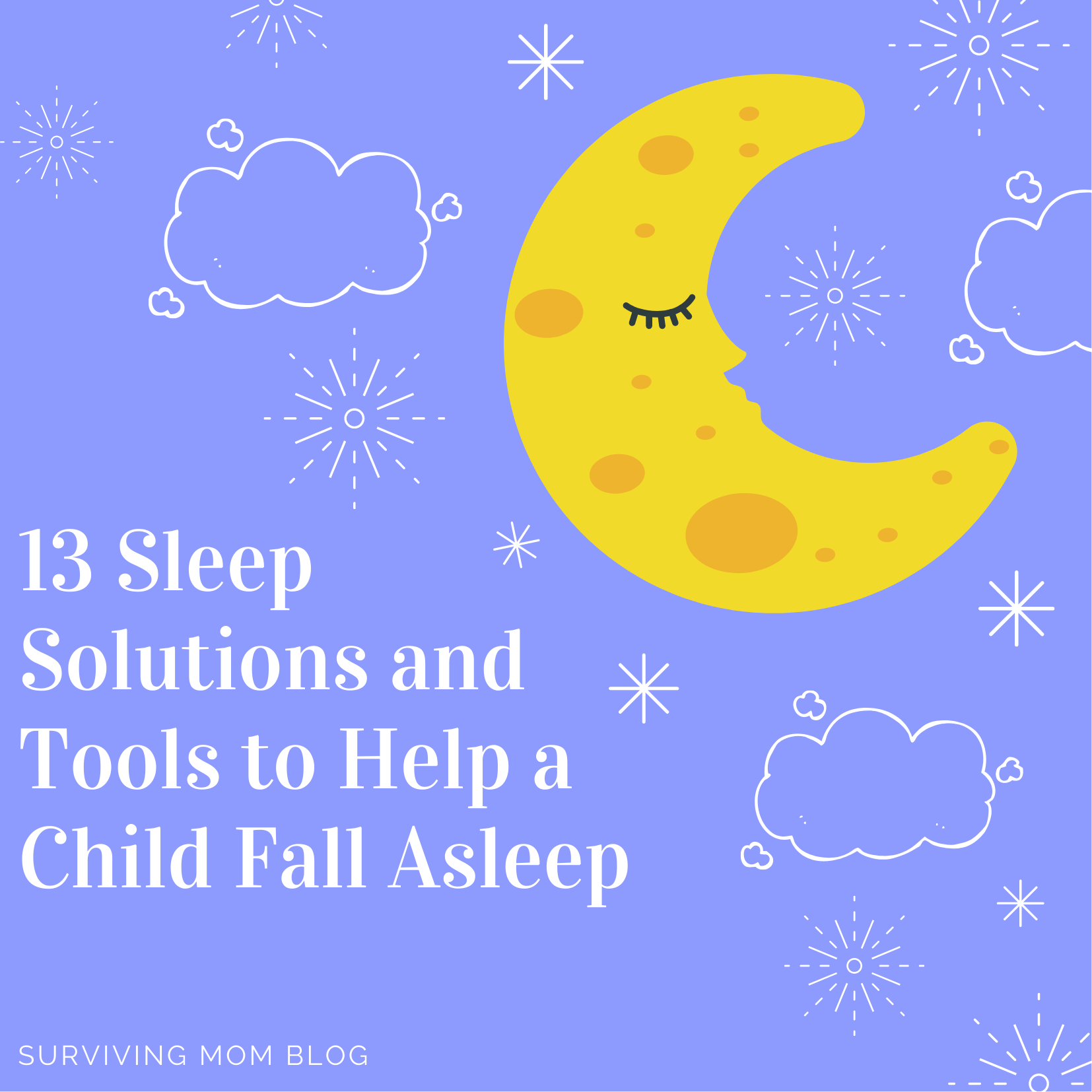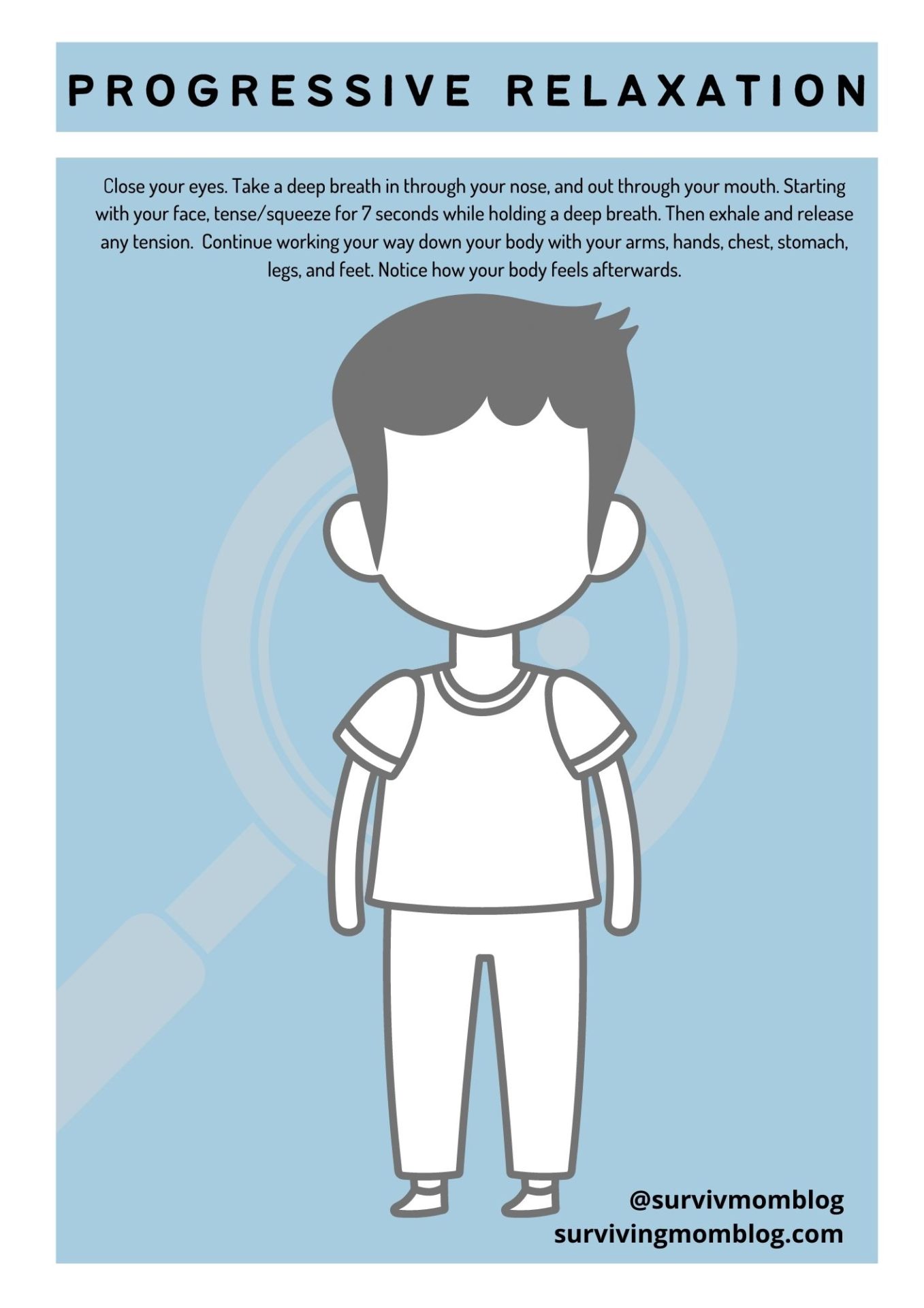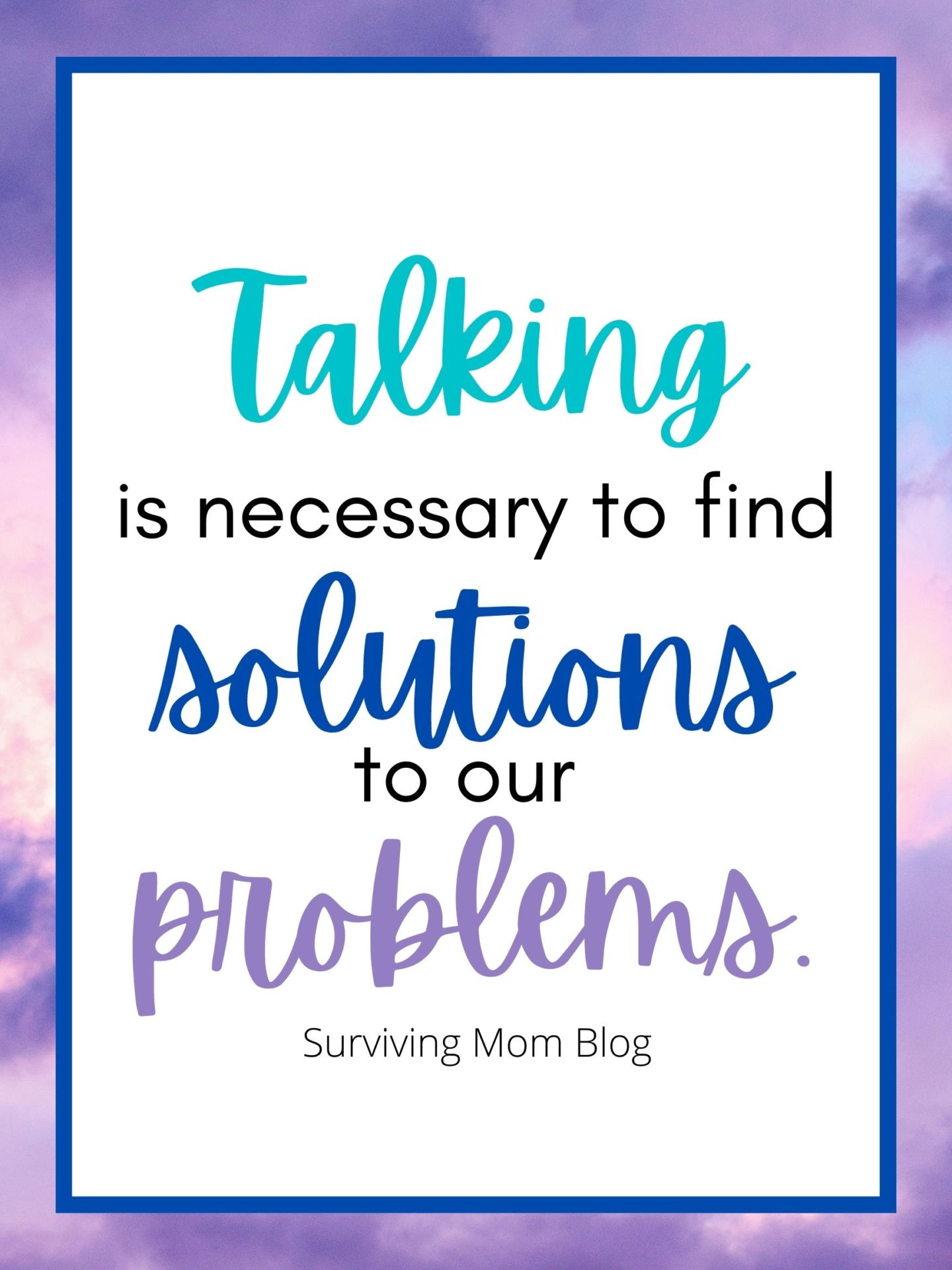
Many children need help falling asleep. Bedtime is a particularly difficult time for my daughter. For many years she had no problem falling asleep and staying asleep. As Brielle got older, her mind and body started to get restless due to her Sensory Processing Disorder (SPD) and ADHD. What was once a seamless transition turned into evenings filled with tears, anxiety, and fear. I had to research sleep solutions to help my child relax and fall asleep.
sleep solutions and tools to help a child fall asleep
Whether your child is the occasional troubled sleeper or bedtime battles are nightly, this post is full of sleep solutions. As an added bonus, many of them are helpful for adults too!
(1) Brainstorm
Discuss with your child what specifically is bothersome for them about bedtime. Is it the dark? Are they afraid of sleeping in a room by themselves? Is it that they can’t calm their thoughts? Whatever it is, encourage your child to be open and honest about their concerns. Be supportive, and brainstorm together about sleep solutions to help fall asleep.
Some ideas that my daughter and I brainstormed together:
(a) My daughter doesn’t like being by herself at night and is also a restless sleeper. My husband and I each gave her a stuffed animal that we had from our childhood, so she has something tangible to remind her that we are with her while she sleeps in her own room.
(b) We also were gifted a small photo album such as this one. It contains photos of her family that she can look at if she feels sad. I love that the album is small, so she can easily hold it.
(c) Brielle didn’t like the darkness, so she used a light projector that comes in a variety of colors and settings.
(2) Relaxation Techniques
a) I do a visualization with her before bedtime where she imagines a box filled with all her worries and concerns. She tells me what the box looks like, and then she visualizes opening her box and filling it up with every fear and bothersome thought. Next, she imagines closing the box, putting a lock on it (so the worries can’t creep back into her mind), and throwing it where it is impossible to resurface (sometimes it is the bottom of an ocean, other times it is buried underground). This is the only time during our bedtime routine where I allow her to voice her grievances. Once they are put in the box, she waits until the morning to discuss any of her concerns, as needed.

b) Breathing: there are several breathing techniques we use. She gets to pick which ones she wants to implement each night:
· 4-7-8: Inhale for 4 seconds, hold it for 7 seconds, and exhale for 8 seconds. We do this together several times.
· Deep belly breathing: She inhales and fills her tummy with air then exhales and the air leaves her tummy. You can do this while doing the 4-7-8, but I find that it overwhelms her, so we choose one or the other.
· Tensing and relaxing her body from her head to her toes (aka Progressive Relaxation)- Starting with her face, she tenses/squeezes for 7 seconds while holding a deep breath. Then, she exhales and releases any tension. She continues working her way down her body with her arms, hands, chest, stomach, legs, and feet. This is a favorite of mine, and one which I do on my own as a form of self-care .
· Taking an inhale and then exhaling for as long as she can while vibrating her lips to make a “wwww” or “ommm” sound: According to Neurosculpting Instititue (neurosculptinginstitute.com), “The researchers found that the vibrations from ‘OM’ chanting stimulate the vagus nerve, which then sends out neurotransmitters and electrical signals that reduce activity to key areas of the brain like the amygdala, associated with our flight/fight/freeze response. In addition, the increased oxygenation of the blood from the vibration facilitates feelings of relaxation and release in the muscles and structure of the body.”
(3) Being her own friend
As I mentioned in my article about ways to build your confidence , it is important to treat yourself with the same compassion as you would a friend. If she still feels anxious or sad after using the relaxation techniques, I encourage her to talk to herself and comfort herself just like she would if a friend was upset at bedtime.
(4) Using a sound soother
My husband and I use a sound soother, and our daughter has one in her room as well. We bought her this sound soother almost a decade ago, and it is still going strong!
The sound soother is crucial for her sleep routine. It helps her fall asleep and stay asleep when there is background noise that might wake her up. It also helps calm her mind and body. She uses the rain sound, but all the sounds work very well. This is a great tool to help your child fall asleep.
(5) Weighted blanket
Having that extra pressure on her body when she goes to sleep is extremely helpful in calming and relaxing her. We got her this one because it is budget-friendly, gives just the right amount of support, and has great reviews on Amazon. Weighted blankets are generally considered safe for kids older than 3. However, it’s always a good idea to discuss it with your pediatrician first. Typically, the suggested weight of the blanket should be around 10% of your child’s body weight (sleepfoundation.org, 2021).

(6) Consistency
Keeping a consistent bedtime is crucial for those who need extra support during transitions or don’t like changes in their routine. Life sometimes gets in the way, but I try to have her go to bed at the same time as often as possible.
(7) Books
There are many great books out there about kids who have difficulty sleeping. I chose the book, Orion and the Dark, because it tells the story of a boy who has many fears, particularly the dark, and he discovers that darkness can be his friend. After reading it, we talk about her fears, and how it is okay to feel afraid, but being brave is facing things despite being afraid.
(8) Come up with a bedtime routine
Just as having bedtime at the same time each night is helpful, so is having a consistent routine leading up to saying goodnight. I set aside 15-20 minutes before I leave her room to read books, discuss and implement what sleep solutions and tools she is going to use to aid her with bedtime, and give hugs and kisses.

(9) Alarm clocks
Many younger kids benefit from having an alarm clock with lights to notify them when it is time to wake up (red=sleep and green=wake up), and older kids can have a digital clock that they set. In my daughter’s case, she would wake up hours before the time that we told her. She would then stare at the clock until she was allowed to get up. As a result, we opted to take the clock out of her room and revisit it another time.
(10) Video monitor
We used this video monitor when she was a baby, and it something we still use today. It is very helpful because it reassures her that although she is not with us, we can still see her and hear her.
(11) Transitions
After spending time with her reading and doing relaxation exercises, I noticed that she would get anxious and scared once I left her room. It felt like all the work we had done together vanished as soon as I walked away. As a result, I incorporated a 12-minute period in which she can go to the bathroom, talk to herself, and do the relaxation exercises on her own before she had to lay down. Putting this small window of time in between my leaving her room and her laying down made the transition to sleeping much easier.
We discuss in advance what I will say when the 12 minutes is up. I want to keep the interaction as brief as possible. I speak into the monitor and let her know that her time is up, and she is to lay down. We then tell each other “I love you” and “Goodnight.” At that point, our interaction for the night is over. She knows I will not speak to her again until the morning. At first, she got upset when I would only speak to her once. Through consistency she learned that this is part of our bedtime routine. The structure of it aids in her sleep and helps prevent battles at bedtime.
(12) Melatonin
Melatonin is a natural and non-addictive supplement that can be used to help problematic sleepers. Speak to your pediatrician to discuss what dosage would be best for your child.
(13) Black Out Curtains
Black Out Curtains are a great idea for kids who wake up when the light shines into their room. These have great reviews , come in a variety of colors, and are a great price!

I offer my daughter empathy, support, and compassion, but I cannot force my daughter to feel okay at bedtime. Her perception about bedtime is based on her own inner dialogue. She can choose to see bedtime in a positive way, or she can see bedtime in a negative way. I do everything within my power to aid in that choice. However, she is the one who makes that decision.
These sleep solutions and products have been very helpful for Brielle. With that said, there is no magical wand that can make our children WANT to sleep. Finding tools and strategies to help a child fall asleep is not a one-size-fits-all solution. It is a trial and error process to determine what will work best for each child.
As always, if you have any questions, feel free to reach out to me! Let me know which sleep solutions are helpful for your child!
Disclaimer
This post may contain affiliate links. If you purchase a product via my link I may receive a small commission at no additional cost to you. Please visit our disclaimers here

Patrice Payment says:
I love these tips especially your idea to put the grievances into a box and then not discuss them again until morning. I struggle with sleep myself so I know how it feels for my son. I try to incorporate the things that work for me into what I suggest for him. Like you said sometimes the strategies that work for me help him and sometimes they don’t. I actually have been using the containment strategy by visualizing myself putting my worries into a box in my closet and shelving them. I had never thought of sharing this with my son and I like the way you explained it to your daughter.
Randi says:
Hi, Patrice!
I’m so glad you found the tips helpful. The putting worries into a “box” is one of my favorites too. 🙂 I think the process of acknowledging the worries and then visualizing putting them away until a more appropriate time gives a sense of control. It’s comforting to feel a sense of control when difficulty sleeping can make us feel helpless. Thank you for the feedback, and I’m really happy both you and your son are implementing some of them!
Naomi P Lane says:
This is a great list. The most important for me was the transition routine. We would do the bathroom routines, then read together in bed, then snuggle, then put the nightlight on. The whole process took about thirty mins. It’s important to establish a bedtime routine so they know what to expect. Also, regarding the writhed blankets, I know they are being widely marketed now but I had a physical therapist at Children’s hospital tell me that weighted blankets and vests should be used for a maximum of twenty minutes, so I would caution to do your research when purchasing.
Randi says:
Hi, Naomi.
I agree that bedtime routines are very important for consistency and structure. It goes a long way towards helping with a child’s sleep!
According to webmd and sleepfoundation, as well as numerous studies, weighted blankets can be quite beneficial in aiding with sleep. That said, you do want to make sure they aren’t too heavy (usually they shouldn’t weigh more than 10% of body weight), and it’s best to check with your pediatrician first. However, they generally can be used overnight. Some kids might only like to use them in small amounts, but there is no specific rule. It really varies from person to person. It helped my daughter tremendously with her sleep, and she uses it throughout the night. Hope that clarifies!
I’m so glad you enjoyed the post!